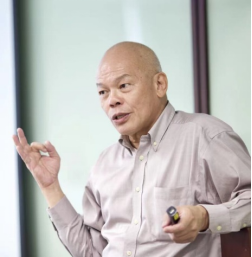Predictive Brain Plasticity, Choice Perception, and the Miserly Brain
Speaker: Professor Soohong Chew
Time: 2:30 p.m., December 5th, 2023 (Tuesday)
Place: Room 202, No.2 Teaching Building, School of Economics

Speaker Information:
Chew Soo Hong is a Professor at the Southwestern University of Finance and Economics where he directs its China Center for Behavioral Economics and Finance. He is a fellow of the Econometric Society, which awarded him the Leonard J. Savage thesis prize, and of the Society for the Advancement of Economic Theory. Chew is Emeritus Professor at the National University of Singapore and has previously taught at HKUST, UC Irvine, Johns Hopkins, and University of Arizona. He has published more than 100 papers in well-regarded journals in economics such as Econometrica, Journal of Political Economics and Journal of Economic Theory.In 2011, he was elected Fellow of the Econometric Society, which made him the 11th Chinese member of the world’s most famous economic association since its founding in 1933.
More Information:
Professor Soohong Chew will present a neurobiological model of how decision options are perceived and encoded under the influence of decision makers' attention and memory processes in the context of uncertainty and risk that he and his collaborators have recently constructed based on cognitive science research.
Predictive Brain Plasticity, Choice Perception, and the Miserly Brain
Chew Soo Hong and Richard Ebstein
The realization that the human brain is dynamic and constantly changing arises from the seminal work of (Hebb, 1949) which posits how synaptic connections between neurons change over time based on their correlated activity with the insightful phrase about neuronal firing-“fire together, wire together”. This Hebbian ‘learning’, reflecting the brain's ability to change and adapt based on prior experiences, has led to the predictive brain plasticity hypothesis (Halvagal and Zenke, 2023) pointing to a mechanism which underpins the brain's proactive tendency to seek causal understanding by anticipating future events and conditions beyond reacting to stimuli as they arise. (A tiger’s roar cannot be confused with the harmless chirp of a bird.) This capacity to anticipate sensory contingencies without being surprised is crucial for survival while minimizing energy expenditure by our miserly brain (Friston, 2010; Clark, 2013; Hohwy, 2013) which seeks accuracy by updating priors along with synaptic weights.
In situations involving risk and uncertainty, how available choices are perceived may have pivotal influence on the eventual decision and the corresponding outcomes. Building on predictive brain plasticity along with the neurochemistry of attention and valuation, we propose a neurobiological model of sensory choice perception from sensation (of stimuli) to perception of the options in a choice situation (especially the consequentialist aspects of the specific choices) through attention and memory (necessarily selective) prior to their evaluation in which cognition has a natural role. Given the inherent scarcity of attention, stimuli surviving the initial filtration are allocated attention in proportion to surprise (when error or deviation from the predictive prior surpasses a certain threshold), which is costly. This triggers the formation of a new prior modulated by a tendency to resist change called inertia. The resulting perceived choice is linked to observable decision making through an attention theory model (Chew, 1983; Chew, Wang, Zhong, 2023). We derive testable implications using for instance pharmacological intervention linking predictive brain plasticity to decision making, which delivers context dependent choice and accounts for several choice anomalies in the literature including loss-gain framing, Allais behavior, ambiguity attitude, and source preference.